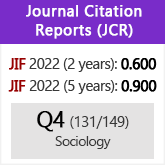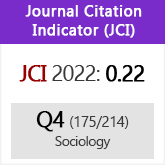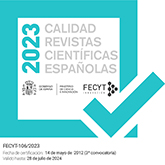Managing a duopolistic water market with confirmed proposals. An experiment
DOI:
https://doi.org/10.3989/ris.2011.09.20Keywords:
Allocation of water, Dynamic duopoly, Endogenous water quality, Games with confirmed proposalsAbstract
We report results from experimental water markets in which owners of two different sources of water supply water to households and farmers. The final water quality consumed by each type of consumer is determined through mixing of qualities from two different resources. We compare the standard duopolistic market structure with an alternative market clearing mechanism inspired by games with confirmed strategies (which have been shown to yield collusive outcomes). As in the static case, complex dynamic markets operating under a confirmed proposals protocol yield less efficient outcomes because coordination among independent suppliers has the usual effects of restricting output and increasing prices to the users. Our results suggest that, when market mechanisms are used to allocate water to its users, the rule of thumb used by competition authorities can also serve as a guide towards water market regulation.
Downloads
References
Attanasi, G., García-Gallego, A., Georgantzís, N. and A. Montesano. 2011. “Non-cooperative games with chained confirmed proposals.” Pp. 19-32 in Contributions to Game Theory and Management edited by L.A. Petrosjan and N.A. Zenkevitch Vol. IV. Forthcoming.
Bar-Shira, Z., Finkelshtain, I. and A. Simhon. 2006. “Block-rate versus uniform water pricing in agriculture: An empirical analysis.” American Journal of Agricultural Economics 88:986-999. http://dx.doi.org/10.1111/j.1467-8276.2006.00911.x
García-Gallego, A., Georgantzis, N., Hernán-González R. and P. Kujal (in press) “How do markets manage water resources? An experiment.” Forthcoming at the Enviromental and Resource Economics.
Gardner, R., Moore, M.R. and J.M. Walker. 1997. “Governing a groundwater commons: A strategic and laboratory analysis of western law.” Economic Inquiry 35:218-234. http://dx.doi.org/10.1111/j.1465-7295.1997.tb01905.x
Georgantzis, N., García-Gallego, A., Fatas, E., Neugebauer, T. and P. Kujal. 2004. “Mixture and distribution of different water qualities: An experiment on vertical structure in a complex market.” Cuadernos de Economía 27:95-138.
Gordon, H.S. 1954. “The economic theory of a common property resource: The fishery.” Journal of Political Economy 62:124-142. http://dx.doi.org/10.1086/257497
Mason, C.F. and O.R. Phillips. 1997. “Mitigating the tragedy of the commons through cooperation: An experimental evaluation.” Journal of Environmental Economics and Management 34:148-172. http://dx.doi.org/10.1006/jeem.1997.1006
McCabe, K.A, Rassenti, S.J. and V.L. Smith. 1989. “Designing ‘smart’ computer assisted markets in an experimental auction for gas networks.” European Journal of Political Economy 5:259-283. http://dx.doi.org/10.1016/0176-2680(89)90049-9
McCabe, K.A., Rassenti, S.J. and V.L. Smith. 1991. “Smart computer assisted markets.” Science 254:534-38. http://dx.doi.org/10.1126/science.254.5031.534 PMid:17806969
Moench, M. 1992. “Chasing the water table: equity and sustainability in groundwater management.” Economic and Political Weekly 27 (nos. 51-52): A171-A177.
Murphy, J.J., Dinar, A., Howitt, R.E., Rassenti, S.J., and V.L. Smith. 2000. “The design of smart water market institutions using laboratory experiments.” Environmental and Resource Economics 17:375-394. http://dx.doi.org/10.1023/A:1026598014870
Tsur, Y., and A. Dinar. 1997. “The relative efficiency and implementation costs of alternative methods for pricing irrigation water.” World Bank Economic Review 11:243–262.
Varela-Ortega, C., J.M. Sumpsi, A. Garrido, M. Blanco, and E. Iglesias. 1998. “Water pricing policies, public decision making and farmers’ response: implications for water policy.” Agricultural Economics 19:193-202. http://dx.doi.org/10.1016/S0169-5150(98)00048-6
Walker, J.M., Gardner, R. and E. Ostrom. 1990. “Rent dissipation in limited access common pool resource environments: experimental evidence.” Journal of Environmental Economics and Management 19:203-211. http://dx.doi.org/10.1016/0095-0696(90)90069-B
Walker, J.M. and R. Gardner. 1992. “Probabilistic destruction of Common-pool Resources: experimental evidence.” The Economic Journal 102:1149-1161. http://dx.doi.org/10.2307/2234382
Williams, A., Smith, V.L. and J. O. Ledyard. 1986. “Simultaneous trading in two competitive markets: An experimental examination.” Technical report, Indiana University, Bloomington.
Downloads
Published
How to Cite
Issue
Section
License
Copyright (c) 2012 Consejo Superior de Investigaciones Científicas (CSIC)

This work is licensed under a Creative Commons Attribution 4.0 International License.
© CSIC. Manuscripts published in both the printed and online versions of this Journal are the property of Consejo Superior de Investigaciones Científicas, and quoting this source is a requirement for any partial or full reproduction.All contents of this electronic edition, except where otherwise noted, are distributed under a “Creative Commons Attribution 4.0 International” (CC BY 4.0) License. You may read here the basic information and the legal text of the license. The indication of the CC BY 4.0 License must be expressly stated in this way when necessary.
Self-archiving in repositories, personal webpages or similar, of any version other than the published by the Editor, is not allowed.

















